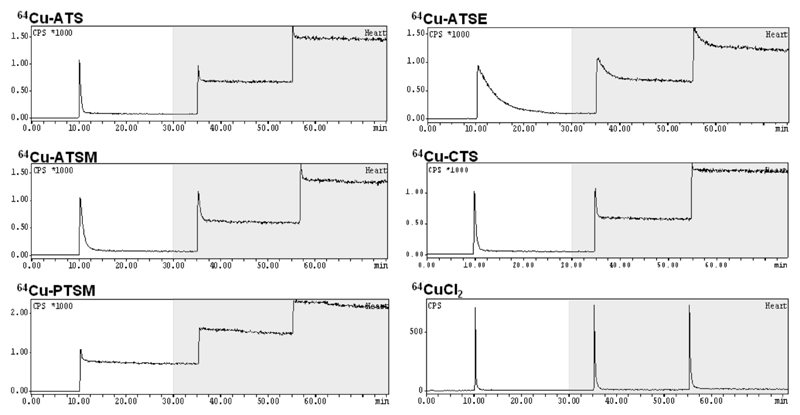Figure 10.
Time-dependent uptake of radioactivity after injection of a bolus of 64Cu BTSC complexes into isolated Langendorff-perfused rat hearts at 10, 35 and 55 min after the start of perfusion. The y-axis represents radioactivity within the heart. White areas indicate periods of supply of oxygenated buffer while shaded areas indicate supply of anoxic buffer. CuPTSM shows a high level of trapping under oxygenated conditions and even higher (close to 100%) under anoxia). CuATSM on the other hand shows low (ca. 10%) trapping under normoxia increasing to ca. 80% after 25 min hypoxia. CuATS and CuCTS show more rapid transit through the heart than CuATSM, and a greater selectivity in binding to hypoxic compared to normoxic heart. CuATSE (54) also shows hypoxia selectivity but takes much longer to transit through the heart because of its increased lipophilicity. Unchelated copper(II) (CuCl2) shows no uptake under either normoxia or hypoxia.

